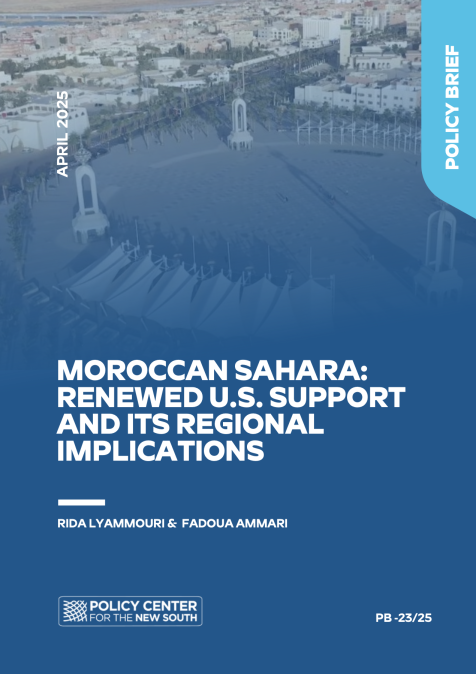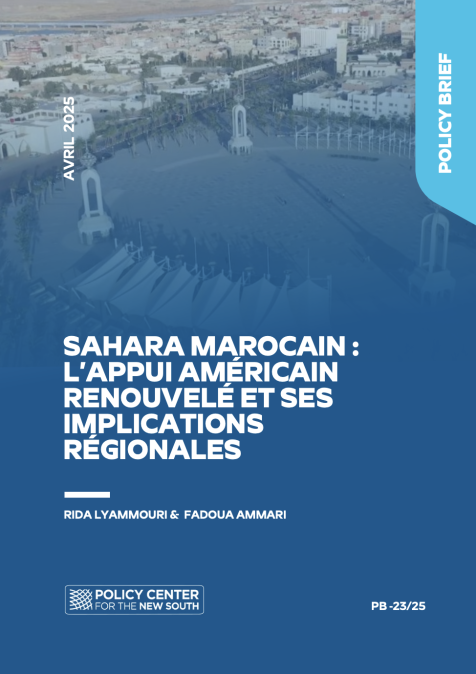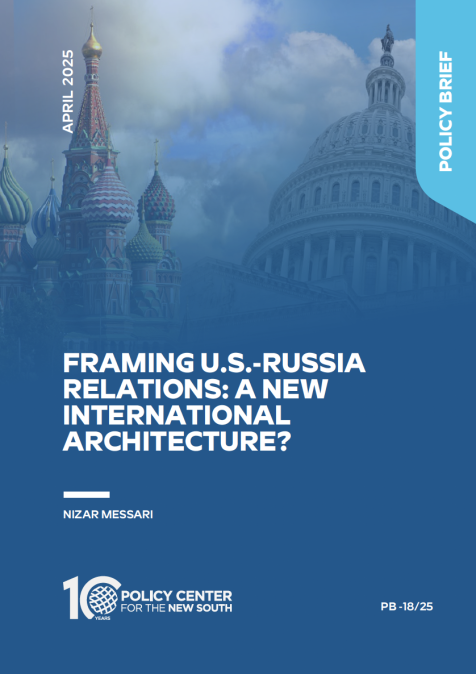Publications /
Opinion
Not far from highway 95, near a town named Lathrop Wells, only one establishment, besides the petrol station, was known to the rough cowboys and joyless soldiers of the nearby nuclear testing site, and that was “Mabel’s whore house”, advertised as such without shame and ready to accept credit cards. Luigi Raugi, a legal immigrant (from Sicily), as it is wise to insist these repressing days of American immigrant bashing, was running the local drugstore and really excited, as were those two dozen hospitable ladies, about the dramatic changes announced by the government in Washington: six miles from their dusty town, which had long been deserted by birds and their friendly chatter, replaced by the engine noise of heavy trucks and an occasional underground nuclear test, America had finally decided that the 70,000 tons of toxic, highly radioactive, nuclear trash, gathered in 80 different locations in 35 states, would finally be dumped into deep tunnels in the Yucca mountains, a remote area centered in a military zone, where the U.S. in early cold war days had released nuclear clouds, deliberately, upon GIs in maneuvers and civilians breathing nearby, possibly the ladies of “Marble’s” as well, radiated by radioactive overdoses, eventually dying of cancer. When I went to report about progress and hope in the mountains for the first time (in 1990), the gigantic project, which was estimated to cost initially eight billion dollars, and once completed and filled to capacity, 120 billion, I was able to climb the hill of hope, the most expensive mountain in the U.S., observe the distant desert, visit the outline of the construction site, but there was no activity - the state of Nevada, whose legendary gambling city Las Vegas was just 100 miles away, had opposed the site, claiming possible earthquakes or biblical floods could tear open the mountains, liberate the lethal legacy of nuclear might, including the hulls of contaminated submarines.
MORE NUCLEAR WASTE ON ITS WAY — WITH GREETINGS FROM NORTH KOREA
Today, more than three decades after Congress had chosen Yucca as the solution for the deadly dump, Donald Trump is trying to reactivate the Yucca project, but has failed in his attempt to be granted the necessary funds placed into his 2019 budget request. The house of representatives voted in May of this year for the plan, but it is unlikely that the President, who possibly will transport North Korea’s radioactive waste to a nuclear storage site like Oak Ridge National Laboratory (Tennessee), will be able to convince the reluctant senators. Trump will insist. As we know, the Republican, elevated to national cult figure by his feverish followers, is obsessed to undo Obama decisions, as the Iran nuclear deal or the Paris global climate agreement confirm. The abandonment of Yucca, in 2009, was also a decision by Obama, who did not offer any alternative to the storage of nuclear waste, which is haunting the U.S. since its first experiments with nuclear weapons in the 1940s. During those war years the so called “Manhattan project” was declared highest national urgency, since Moscow was experimenting with a devastating weapon - a nuclear bomb.
51,000 Americans were activated, not only to construct the first ever U.S. reactor to produce plutonium, needed by the bomb makers in Los Alamos, New Mexico, but build one of the largest nuclear plants in the history of the U.S. The site was secret and its name of utter banality - Hanford, Washington State. Three hours by car to an enlightened town - Seattle. More nuclear waste will be on the way to the US soon, with greetings from North Korea, if you do believe Donald Trump, the dismantled trash of North Korea’s atomic armament. No one, not even the CIA or NSA know for certain, how much plutonium is stored by the regime, or where toxic, chemical nuclear waste has been hidden. The intelligence services estimate that several hundred different nuclear sites are existing in the North. If the Korean nuclear waste and the destroyed structures of reactors, ever arrive in the U.S., there is no modern repository available nor a reprocessing facility of nuclear waste, as in La Hague, France, to handle the trash. The United States failure to establish a burial site for its most dangerous and long lasting nuclear waste could have tragic consequences” warned Fred Pearce, author of “Fall out: disasters, lies, and the legacy of the nuclear age”. Unless put out of harm’s way, “plutonium is virtually a permanent radioactive threat, and a potential attraction for would be nuclear terrorists or malevolent governments of the future. “For the author the unlikely, immediate opening of the Yucca mountain tunnels is “imperative.” Washington hesitated to follow the French model, whose reprocessing center is converting much of the nuclear waste for its immediate neighbors, Germany for example, but also Australia and Japan. U.S. President Jimmy Carter, in early years of his life as submarine commander, banned the reprocessing of commercial reactor spent fuel out of fear of nuclear weapons proliferation in 1977, hoping to avoid the diversion of plutonium from the civilian fuel cycle.
70,000 NUCLEAR WARHEADS FOR NINE TRILLION DOLLARS.
Does Washington pretend to know how Pakistan, in easy reach of the Taliban, deals with its nuclear know-how? When did the U.S. government learn that Pakistan’s most famous nuclear scientist helped North Korea build its bombs and prepared Gaddafi's nuclear dreams, which also ended on American nuclear garbage plants? Is Israel ever questioned by Washington about its nuclear armament? We know that U.S. presidents have given secret written assurances to Israel’s governments, not to request publicly the denuclearization of the jewish nation. The United States itself did spend over the last 75 years at least nine trillion dollars for the expected nuclear showdown with Moscow. Trump is forcing the Pentagon to accelerate the modernization of its nuclear arsenal, since Moscow’s intentions remain suspicious, almost as nebulous as those of their ally Mr. Kim. If Pyongyang is willing to identify all its secret tunnels, if the hidden locations of 20 to 60 of their nuclear or hydrogen bombs, several secret reactors are identified and dismantled, it will take up to 15 years, as the former, Polish born “Los Alamos nuclear laboratory”- director, Siegfried Hecker, predicted “There is no other option but patience, even if Washington is pushing Pyongyang for a radical disarmament schedule.” The scientist, today professor at the “Center for International Security and Cooperation” at Stanford university, recently published a detailed study, in which the expert contradicts the optimistic, mainly political, statements by Trump and his advisers, who had initially pressured North Korea for “a complete, verifiable, irreversible denuclearization”. Hecker, who visited the North Korean nuclear structures four times over the last decade, estimates that the winding down of sites, facilities and weapons would need at least five years. The decontamination and decommissioning of a simple plant that handles radioactive material, could take, by his experience, a decade or longer, followed by a slow dismantlement of structures and buildings. Will the plutonium - containing “spent fuel”, produced by the reactors during their working life, be shipped to the U.S., a rather dangerous transport since plutonium is an emitter of virulent radiation and has a half life of 24,000 years (a half life is the time it takes for half of the radioactive material to decay)?
”TERRIFIC RELATIONSHIP” AND “VERY SPECIAL BOND”
Is Washington handling and paying the transport of North Korea‘s nuclear debris? Who will be trusted with disassembling the weapons, a complicated task? Hecker suggested the simplest method would be to engage the same North Koreans who armed the warheads. The costs of dismantling a nuclear reactor are astronomical, estimated at one billion dollars or more. At times decommission and dismantlement is more costly than the original construction. Is Washington willing to assume the costs? Or will the U.S. at the end ask allies like South Korea or Japan to share with the expenses? North Korea is unable to finance the dismantling of its nuclear arsenal, which may deprive the nation also of its reactors, including one under construction, which, supposedly, was destined to produce electricity. Is Mr. Kim willing to sacrifice his five megawatt reactor at Yongbyon, active in plutonium production since 1986, but eventually may be needed for generating electricity as well? Will the enemies find a compromise in deciding which reactors or scientific institutions are essential for a denuclearized North Korea, or who of the military scientists would be allowed to transfer their know how into peaceful endeavours? Is the President ready to accept the reduction of North Korea’s nuclear arsenal in phases? Is the dictator ready to turn in all his chemical weapons, and his germ warfare components? Is the new “terrific relationship” and “very special bond (Trump)” of the newest buddies mainly a Public relation exercise, a political soap opera staged by Donald Trump, or an attempt to soften the position of Mr. Kim, who, after five hours (translated) talk, will certainly not risk his personal future and security by trusting Trump and his theatrics? Or is the dictator, who flew in a chartered Air China plane to his rendezvous in Singapore, so desperate for economic aid that he would just need to trust Donald Trump. No problem for the erratic U.S. President to change his mind any moment, tomorrow, next month and threaten, again, destruction, if Mr. Kim is slowing down his promise of nuclear disarmament? Who will be the hundreds, possibly thousands of experienced inspectors, ready for the detailed inventory of North Korea’s nuclear might, its ballistic missiles and, possibly, surprise, a nuclear armed submarine? Will the Americans involve Russian experts in the dismantling of nuclear weapons, or ask the Chinese to participate in the difficult process of inventory and verification? Or will America insist on exclusive access, dismantling facilities used to manufacture nuclear weapons, destroying stockpiles, a rather difficult task even for experts unfamiliar with the system?
WITHOUT FEAR, MORAL, OR HESITATION
Hundreds of unanswered questions, to be negotiated in the months and years to come, possibly slowed by disagreements between the new partners for peace. A rather cynic thought - Mr. Kim may find satisfaction, or rejoice, that his bombs, prepared to reach targets on the American continent on ballistic missiles will arrive in steel drums instead, still able to impose damage. Eventually the metal containers, in a decade or two, would rust and the plutonium enriched spent fuel, made in North Korea, would seep, drop by drop, into the groundwater of the United States, spreading radiation into the rivers, incredible long rivers, filled with natures gifts like fish and crabs and lobster, and all of them would get radiated by North Korea. Radiated fish made in North Korea, caught on the ol’ Mississippi river or Rio Grande by a tug boat captain, is not phantasy anymore, but could turn into tragic reality. The United States, one of the pioneers of cyberspace, digital advances, the discovery of the universe, has neglected its toxic, nuclear waste management by demonstrating unbelievable ignorance and disinterest for its national environment. An ecological disaster beyond imagination: Some areas of the United States are cut off from the United States, by irresponsible actions and decisions by government and scientists. Just one example - the greatest environmental catastrophe in American history - Hanford. The birthplace of THE bomb. A symbol of neglect and rape of nature: 580 square miles forever a stain in America’s conscience. It took time for Washington to consider and declare Hanford a national emergency, particularly after it became clear that Yucca mountains would not open up and could not take, as planned, Hanford’s waste, at least some of it. When I visited this atomic drama, eight of its plutonium producing reactors had been shut of (between 1964 and 1971), the waste these reactors left behind, was still stored in 177 metal, underground tanks, holding 53 million gallons of high level radioactive trash, physically hot, and highly dangerous. Nearby aquifers contain an estimated 270,000,000,000 (no zero mistake) gallons of contaminated water, and to this day is seeping towards the once pristine Columbia river, into which radioactive liquids were dumped again and again, without thought of nature. America was facing the sinister Soviet Union, and therefore, whatever the cost, plutonium was needed by the bomb designers in Los Alamos, New Mexico, and the reactors of Hanford would deliver - some of its plutonium was used to manufacture the bomb which blew Nagasaki off our globe. The reactors and five plutonium processing complexes in Hanford produced the majority of plutonium for America's estimated 70,000 nuclear warheads developed since the last world war. In 1967, the cold war was raging, a nuclear showdown around Cuba had been avoided, the U.S. had stockpiled 31,255 nuclear warheads. Without fear, moral or even hesitation, the engineers and scientists released significant amounts of radioactive materials into the air and rivers. Hulls of nuclear submarines, rail cars and clothing were buried in pits and trenches. Hanford is horror, a scenario, which Dr. Strangelove would inhale in triumph. 1,450 square kilometers off limit for normal human life. Large areas secured with electric fences and strange warning posts, conceived for humans living in 10 or 24,000 years. Symbolic letters and sign language warning of deadly confrontation with the nuclear nightmare. Here civilization collides with human irresponsibility, with disregard for nature, for humanity itself. The air in the ghostly reactor buildings were cold, the metal grey, the site cleared of any noise and human spirit. Death was once pulsing within these chambers, the knowledge that the material produced would be used to eliminate humanity. Now reactors are encased and surrounded by beton, other buildings are dismantled, to be shipped soon, very soon, in two years, a decade, left to rot above the ground, somewhere in nowhere, perhaps on an Indian reservation, where children play and radioactive liquid reach its groundwater.
CLEAN UP COMPLETION DATE: 2046
Hanford has turned, almost three decades ago, into the largest environmental cleanup program in the world, almost unnoticed, despite its challenges and costs - 113.6 billion dollars. The end is not in sight, just an estimated date of completion - 2046. If this goal is reached, America has worked for more than half a century to clean up the atomic mess just at this one plant alone, and it is expected to add another 100 billion dollars for cleanup activities to achieve redemption. An incredible operation, in which 11,000 workers are involved, and American corporations like Bechtel, a conglomerate based in San Francisco. In 2002 the company signed a contract to build a vitrification plant, to combine dangerous wastes with glass to render them stable. In 2011, that was the plan, the glass act could begin. The costs: 4.3 billion dollar. In the meantime, Bechtel announced a new date for the start of the revolutionary cleanup method: 2022. Two decades late. To be completed in 2028. Perhaps a decade later. Nature can wait. Nature will do the cleanup job. The price changed accordingly: 13.4 billion. Years prior to the cleanup act with historic dimensions America began to drown in its nuclear trash, capable of landing on moon and mars, but unable to deal with nuclear trash, which is threatening million of its citizens. Nuclear bombs were everywhere, loaded onto submarines, in unknown locations like the north pole region. Until 1965, nuclear warheads were stored near Thule Air Force Base, and an operation “Iceworm” was prepared by the Pentagon: 600 nuclear armed missiles to be hidden under the ice cap of Greenland. The weapons of mass destruction, only used twice against (Japanese) human life, were floating on planes above the earth, ready to react to an attack, any nuclear attack.
THE HISTORIC DAY THE NUCLEAR BOMB WAS LOST
When I was young and fearless, because of youthful ignorance, I was directed, on a special plane and special security clearance, to a crash site of a nuclear armed bomber into a rather unpleasant area: 76°31’52”N 068 °42’11”W. 1,207 kilometers north of the Arctic circle - Greenland. The temperature: 45 minus Celsius. Wind: 85 miles. There was no daylight. Just darkness on Thule Air Force Base, black, interrupted by shades of darker grey, which, at the end, seems like light, sunlight. The barracks are lit by neon lights, three doors secure each entrance to keep the freezing danger out. The crash in January 1968 caused great concern and cold war fever - the B 52 Stratofortress , on a secret mission, armed with four hydrogen bombs, nearly a hundred times more powerful than the bomb dropped on Hiroshima, alerted the control tower in Thule of a cockpit fire, 90 miles from base, and captain John Haug requested an emergency landing. Because of fumes in the cockpit the crew of seven could not read their instruments anymore, but aimed their stricken plane towards the light on the far horizon, the base. When the fire threatened to blow up the giant plane six airmen injected with their seats, the seventh tried to escape out of a hatch, his parachute caught fire and he ended his life in darkness, buried by ice and snow. When I approached the area where the plane had burst into flames, fed by 225,000 pounds of fuel, I was wearing a face mask against the cold, was protected by thermo-clothing, heavy thermo-boots, filled with sheep wool. The sleds brought us quickly to the scene, driven by experienced natives, the Eskimos. Hardly any debris was visible, just in the distance, a large black spot, 400 by 2,200 feet, where the fuel had burned and opened up the ice for a few hours or so. The Danes, administrators of Greenland, insisted on a total clean up, a difficult task, with radiation and freezing temperatures combined to a novel challenge.
The area was highly contaminated with jet fuel and radioactive elements, that included plutonium, uranium americium and tritium. The conventional high explosive components of four 1.1 megaton hydrogen bombs detonated on impact, spreading radioactive material onto the ice, but a nuclear explosion was not triggered. Air Force medics monitored airborne contamination with nasal swabs, including my frozen nose, and only 335 of 9,837 swabs had detectable levels of alpha particle activity, none though above acceptable. I was tested daily and cleared. 700 soldiers and Danish civilians (not protected by safe clothing or masks), were activated to remove radioactive snow, ice and debris from the accident site and its surrounding - terrible work under hazardous conditions. This was january, one of the coldest periods of the arctic. In summer the ice would be melting and the radioactive fuel would float onto the sea and subsequently contaminate the shores. All contaminated elements were collected, stored in metal containers and shipped to the U.S., the debris of the wreckage was delivered to a Pentagon plant in Texas, the tanks with radioactive liquids and fuel to Savannah River, South Carolina, a plant where, possibly, some of Kim Jong Un’s trash could also be stored. Without informing the angry danes, the U.S. military send, secretly, a mini sub to look for weapons debris on the ocean floor. In reality Washington was searching for a bomb, the fourth, worried that the Soviets were attempting to roam the ocean floor and possibly try to steal it. The Pentagon was certain: a secondary stage cylinder of uranium and lithium deuteride - the nuclear fuel components of one of the bombs, was missing. It was a historic day, because never before a nuclear bomb was just lost.
FAKE NEWS?
A mystery, which BBC, four decades after the accident, revealed, supporting their scoop with secret government documents. A bomb was indeed lost, possibly it had sunk into impossible depth. Covered by ice, by mountains of ice. Copenhagen and Washington declared “fake news”, the standard reaction of Donald Trump these days, if confronted with unpleasant revelations. All bombs had been recovered, reduced to nuclear dust, but recovered. Where is the bomb? A mystery for Agatha Christie. No scientific answer was given, just reassuring scientific reports were published that plutonium in the marine environment of Thule presents an “insignificant risk to man”. The accidental destruction of three highly dangerous bombs, the possible loss of the fourth is, no question, a footnote of nuclear disasters. But this incident is also an example for dishonesty of governments, the attempt by politicians to downplay nuclear catastrophes. And more: what does it say about our politicians, scientists, and nuclear managers, that NO country has been able in more than half of a century to find a solution where to store nuclear waste, unbelievable amounts of a lethal legacy? The United States counts 99 active civilian nuclear reactors, of which one third are over 40 years old and within a short period of time ready for decommission. The costs are staggering, as they are in Germany, which decided to fade out of nuclear energy. The funds will be available, but where do the nuclear nations store their waste, their highly dangerous trash? The United States would need two repositories the size of Yucca mountains for its present toxic trash, but construction of the needed plants will take years and may cost hundreds of billions. The expected waste of Mr. Kim’s nuclear adventure will not put the civilian nuclear authorities or the Pentagon under stress or tension. America has space for Mr. Kim’s trash - aboveground, and just not really secured. The arrival of a dismantled North Korean bomb on American soil would be a tremendous media event, ensuring Donald Trump at least one more paragraph in future history books. The dream, the nightmare though goes on: Nuclear arms are still tempting many nations, despite or because of the North Korean happening. Mr. Kim’s nuclear armament, his willingness to threaten the United States with a nuclear missile attack, created a diplomatic opening for the dictator, unexpected and surprising.
WILL MR. KIM JONG UN HIDE A FEW BOMBS JAMES BOND-LIKE ON AN FORGOTTEN ISLAND?
Now several countries in the Middle East are pursuing a so called nuclear program as well, quietly, supposedly to produce electricity. Former German Foreign Minister Joschka Fischer though suspects, the “real intention is a different one.” If Tehran restarts its nuclear armament project, angered and provoked by Trump's decision to tear up the nuclear treaty , Saudi Arabia may counter. Ankara plays with the idea, and Syria may hope again after it lost its nuclear ambition, supported by North Korean scientists and workers (when Israel attacked and destroyed its uncompleted reactor in 2007). Where will all these new nuclear nations secure their waste? It is an unwanted heritage, which will be around for thousands of years, ever dangerous, and at any moment radiated clouds may escape storage, just one mistake at a reactor, a devastating hurricane, BOOM. Hanford was close to deadly disasters, many times, other plants were and will again be facing death and drama. Do we really know whether Mr Kim Jong Un will not hide a few bombs and ballistic missiles in an unsuspecting location, below a lake or, James Bond-like, somewhere drilled into a forgotten island? Israel’s Prime Minister, who never revealed where his country is securing its nuclear weapons or keeps its waste, tried to accuse Tehran of being already in possession of a bomb, proven by, possibly fabricated, documents. Impossible? All is possible. No surprise if Trump and his buddy Kim are honored with the Nobel Prize for Peace.









